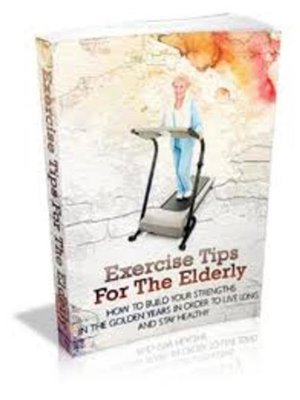
Sign up to save your library
With an OverDrive account, you can save your favorite libraries for at-a-glance information about availability. Find out more about OverDrive accounts.
Find this title in Libby, the library reading app by OverDrive.



Search for a digital library with this title
Title found at these libraries:
| Library Name | Distance |
|---|---|
| Loading... |
Seniors should try common balance exercises to start building their
defenses against serious falls. Several balance exercises are really simple to
do – you will be able to do them in your living room! To begin, hold onto a
table, chair, or doorway to help you. You are able to also ask somebody to
spot you. As you advance, grasp with only one hand, then with a finger,
then hands-free.
For individuals especially steady on your feet, you also can challenge your
balance by attempting these exercises with your eyes closed. Only do what
you're comfortable doing – there's no sense in falling in your efforts to
prevent a fall, after all. Basic balance exercises include walking heel-to-toe,
raising and lowering yourself in a chair, and single leg stands.
If you're in generally good health, but do suffer from osteoporosis, gentle
weight-bearing and balance-focused exercises could help you decrease bone
loss, conserve bone mass, and stay physically active. Walking, low-impact
aerobics, dancing, yoga, Pilates, and swimming are all great choices that let
you go at your own pace, but that provide functional training.
Note that swimming isn't a weight-bearing exercise, but it's often a favored
exercise for individuals with severe osteoporosis because it improves
cardiovascular fitness and muscle strength while removing the risk of a fall.
Naturally, always consult a health care professional before integrating any
new activity into your exercise regimen.
Because individuals with osteoporosis have bones prone to fracturing, they
should avoid high-impact activities, and activities in which sudden motions
and potential falls are likely. Such activities include high-impact aerobics,
exercise requiring sudden jolts, stops and starts - such as tennis or squash -
or activities, exercises that require a twisting motion, such as a golf swing,
and any other activity that requires forceful movements. Because golf,
tennis, running and other activities included in this list are enjoyable ways for
seniors to stay fit, definitely consult with a health-care professional
about whether you should be participating in such activities, and how often
and at what intensity.
Stroke patients have exceptional challenges, and balance training can be a
crucial part of rehabilitation. People who have suffered a stroke often are
coping with limited mobility, balance challenges, and having to re-learn
everyday movements.
defenses against serious falls. Several balance exercises are really simple to
do – you will be able to do them in your living room! To begin, hold onto a
table, chair, or doorway to help you. You are able to also ask somebody to
spot you. As you advance, grasp with only one hand, then with a finger,
then hands-free.
For individuals especially steady on your feet, you also can challenge your
balance by attempting these exercises with your eyes closed. Only do what
you're comfortable doing – there's no sense in falling in your efforts to
prevent a fall, after all. Basic balance exercises include walking heel-to-toe,
raising and lowering yourself in a chair, and single leg stands.
If you're in generally good health, but do suffer from osteoporosis, gentle
weight-bearing and balance-focused exercises could help you decrease bone
loss, conserve bone mass, and stay physically active. Walking, low-impact
aerobics, dancing, yoga, Pilates, and swimming are all great choices that let
you go at your own pace, but that provide functional training.
Note that swimming isn't a weight-bearing exercise, but it's often a favored
exercise for individuals with severe osteoporosis because it improves
cardiovascular fitness and muscle strength while removing the risk of a fall.
Naturally, always consult a health care professional before integrating any
new activity into your exercise regimen.
Because individuals with osteoporosis have bones prone to fracturing, they
should avoid high-impact activities, and activities in which sudden motions
and potential falls are likely. Such activities include high-impact aerobics,
exercise requiring sudden jolts, stops and starts - such as tennis or squash -
or activities, exercises that require a twisting motion, such as a golf swing,
and any other activity that requires forceful movements. Because golf,
tennis, running and other activities included in this list are enjoyable ways for
seniors to stay fit, definitely consult with a health-care professional
about whether you should be participating in such activities, and how often
and at what intensity.
Stroke patients have exceptional challenges, and balance training can be a
crucial part of rehabilitation. People who have suffered a stroke often are
coping with limited mobility, balance challenges, and having to re-learn
everyday movements.







